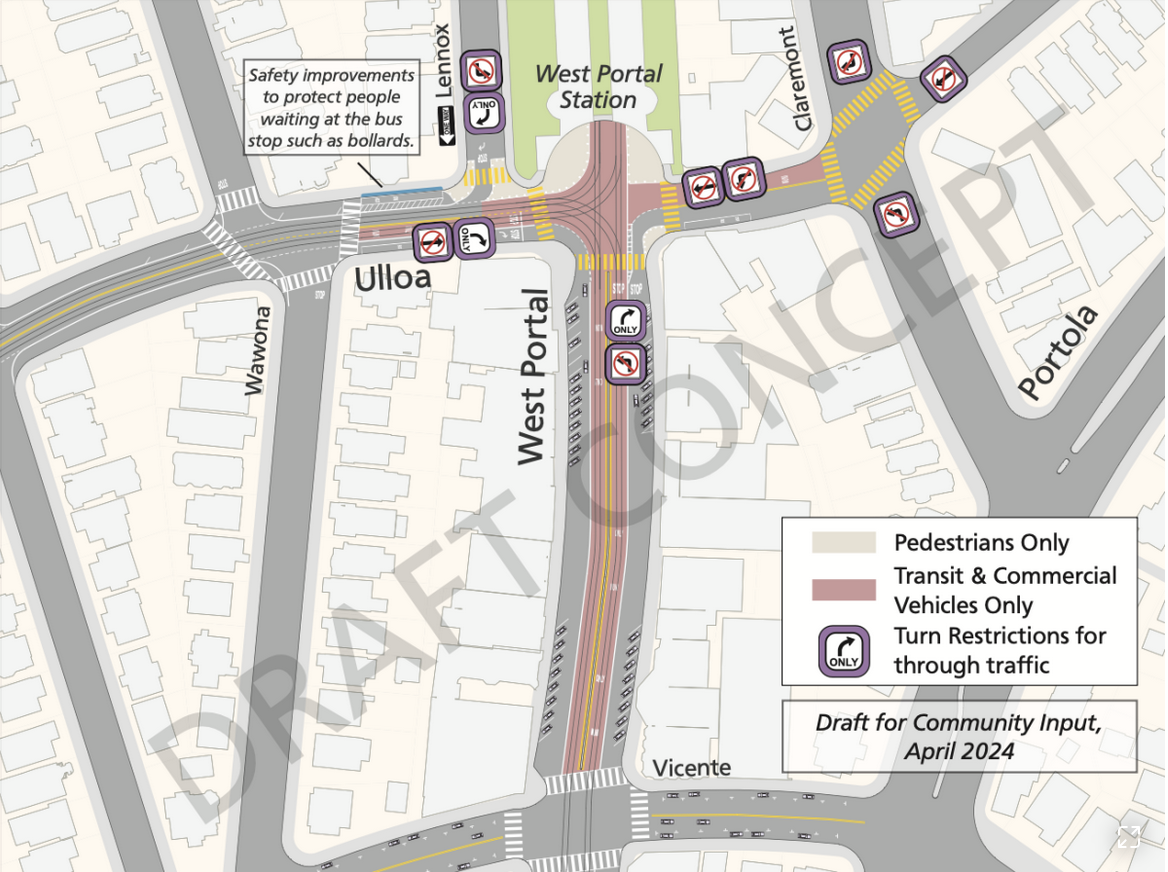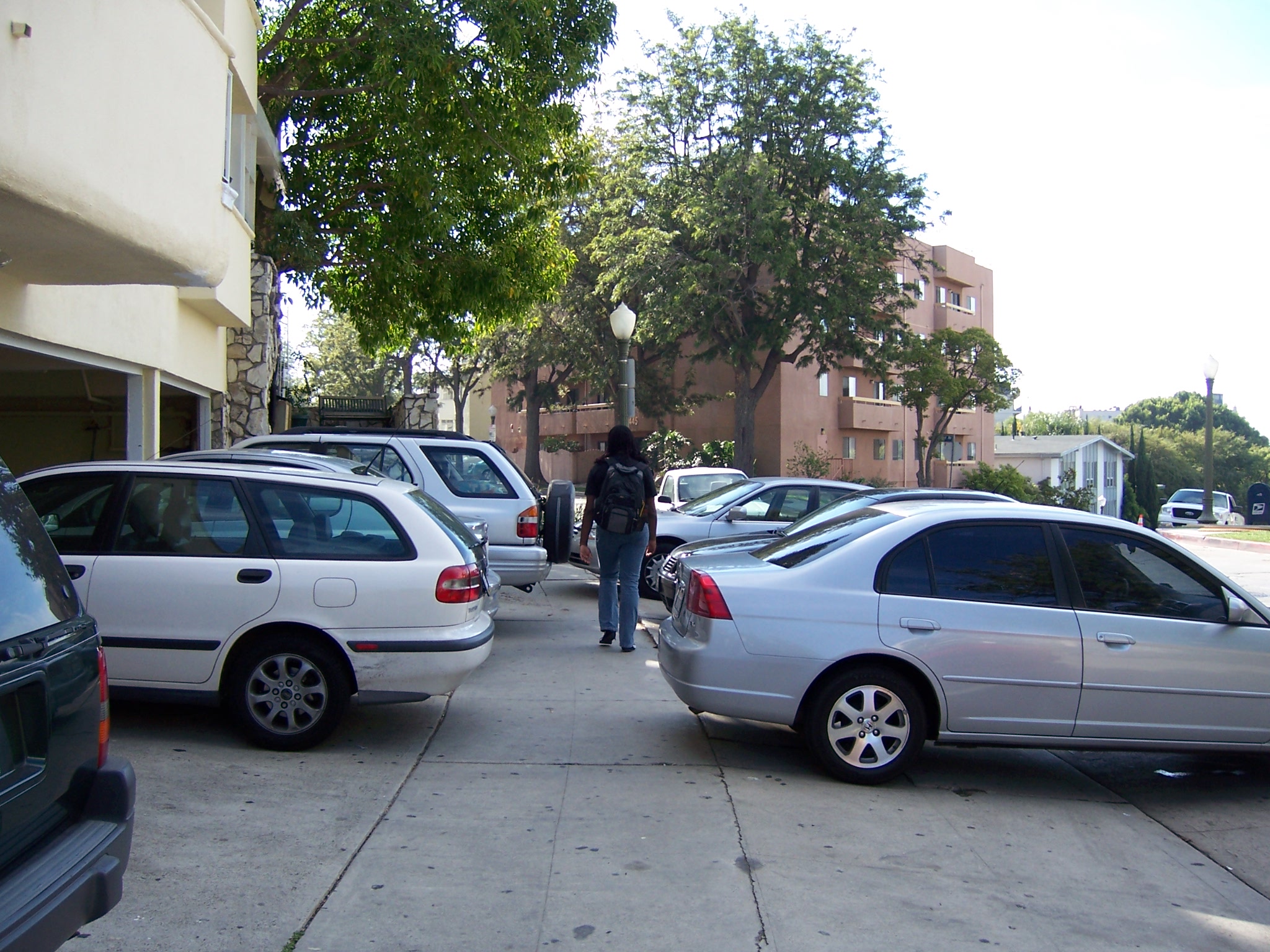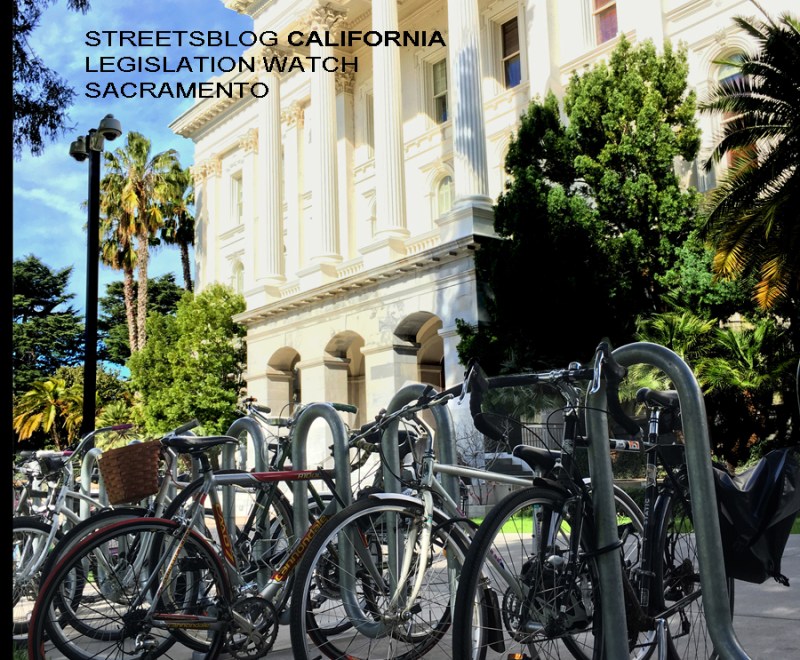This is the second of two posts on S.B. 127, the Complete Streets bill from Senator Scott Wiener (D-San Francisco) that will be heard in the Assembly Transportation Committee this coming Monday.
The first post, which you can find here, discussed some background on why the bill is necessary, and why it contains requirements for Caltrans to track and manage things like crosswalks and bike lanes on state-maintained roads.
Complete Streets for All Users
The main thrust of S.B. 127 is that it requires any project that gets funding from the State Highway Operation and Protection Program (SHOPP) on specific roads to include pedestrian and bicycle improvements. Those specific roads are defined as state-owned highways that are not freeways but that cut through towns and cities. Many of these are streets where people live, go to school, worship, shop, and visit businesses, and many of them are nightmares for people trying to get around by means other than a car.
The idea behind the bill reflects what used to be called "routine accommodation"--that is, whenever work is being done to improve travel for vehicles, travel for other users of the road must also be improved.
It just makes sense. California has invested heavily in building for and accommodating vehicles, and so now has a transportation system that relies on and encourages vehicle use. To encourage people to adopt healthier transportation modes, which is a state goal, those modes must also be invested in and built for.
Equity, Transparency, and Accountability
In the same way that it aims for a shift towards fairness in which modes get investment, S.B. 127 also aims to move towards a more equitable transportation investment system. That is, it prioritizes spending in communities that have not seen much in the way of any transportation investments--generally low-income communities and communities of color. It also gives investment priority to communities that already have relatively low private vehicle use, and those that have a high percentage of disabled members.
It also calls for better public input, to allow community members to have a say in what happens on their roads. Caltrans already establishes a project development team for each of its projects; S.B. 127 calls for that team to be a public-facing one. In addition to planners and project managers, the team is supposed to include members of local bicycle and pedestrian advisory committees, community organizations, members of low-income communities, and other people affected by a project. It also calls for existing locally adopted active transportation plans and safe routes to schools plans to be incorporated into the planning process.
On top of that, reducing fatalities and severe injuries among all road users, including "vulnerable road users" such as pedestrians and bicyclists, will be a priority measure for the safety improvements.
There is room for Caltrans to game this language. Some of its engineers still believe that preventing people from crossing roads where they need to cross is a pedestrian safety improvement, for example. Ongoing internal training of Caltrans engineers will continue to be needed.
But at least they will no longer be able to ignore the fact that people may want to ride a bike or walk across one of their improved facilities, and they will at the very least have to account for their presence on state roads.
"S.B. 127 is not just a Complete Streets policy to ensure a safer streets," said Linda Khamoushian of CalBike, one of the sponsors of the bill. "It also has implications for addressing the climate crisis, as well as the health and economic disparities faced by communities across California. Now is the time to hold Caltrans accountable for ensuring that our transportation system works for all road users -- whether it's children crossing the street to get to school or commuters opting to bike to work."
Next Steps
On Monday, S.B. 127 will be heard in the Assembly Transportation Committee. As mentioned previously, it's not clear what position the chair, Assemblymember Jim Frazier, will take.
There is always the potential for a chair to block a bill or cause it to be watered down, as Senate Appropriations Committee Chair Anthony Portantino did to Senator Wiener's housing bill. But it's not possible to do that without support from others in the legislature, particularly the Speaker or President Pro Tem.
Members of the Assembly Transportation Committee have not always followed the lead of this chair, and some of them are very likely to vote in favor of S.B. 127 regardless of his position. Assemblymember Laura Friedman (D-Glendale), for example, is a co-author on the bill--along with Assemblymembers Richard Bloom (D-Santa Monica), Tasha Boerner Horvath (D-Encinitas), David Chiu (D-San Francisco), and Eduardo Garcia (D-Coachella).
But there is never a guarantee that it will pass until the vote is taken.
In addition to Frazier and Friedman, members of the Transportation committee are Assemblymembers Vince Fong (R-Bakersfield), Cecilia Aguiar-Curry (D-Sacramento) Marc Berman (D-Palo Alto), Frank Bigelow (R-O'Neals), Kansen Chu (D-San Jose), Jordan Cunningham (R-San Luis Obispo), Tom Daly (D-Anaheim), Tyler Diep (R-Westminster), Mike Gipson (D-Los Angeles), Timothy Grayson (D-Concord), Jose Medina (D-Riverside), Adrin Nazarian (D-San Fernando Valley), and Patrick O'Donnell (D-Long Beach).
S.B. 127 has strong support from a wide range of organizations. In addition to the California Bicycle Coalition, it is co-sponsored by California Walks, Safe Routes Partnership, American Heart Association, and AARP. A letter in "strong support" of the bill [PDF] was signed by almost fifty different organizations, including the Coalition for Clean Air, Policy Link, Leadership Counsel for Justice and Accountability, Trust for Public Land, Rails-to-Trails Conservancy, Sierra Club, Climate Plan, Environment California, Natural Resources Defense Council, and a slew of others including local bicycle and pedestrian advocacy organizations.
The Silicon Valley Leadership Group and the Rural County Representatives of California also wrote letters in support, as did a dozen others, according to the bill's sponsors.
If it passes the Transportation Committee on Monday, it will need to pass the Appropriations Committee before it heads to the Assembly floor for a final vote.
Readers can add their support or find their Assemblymember through CalBike's site.





